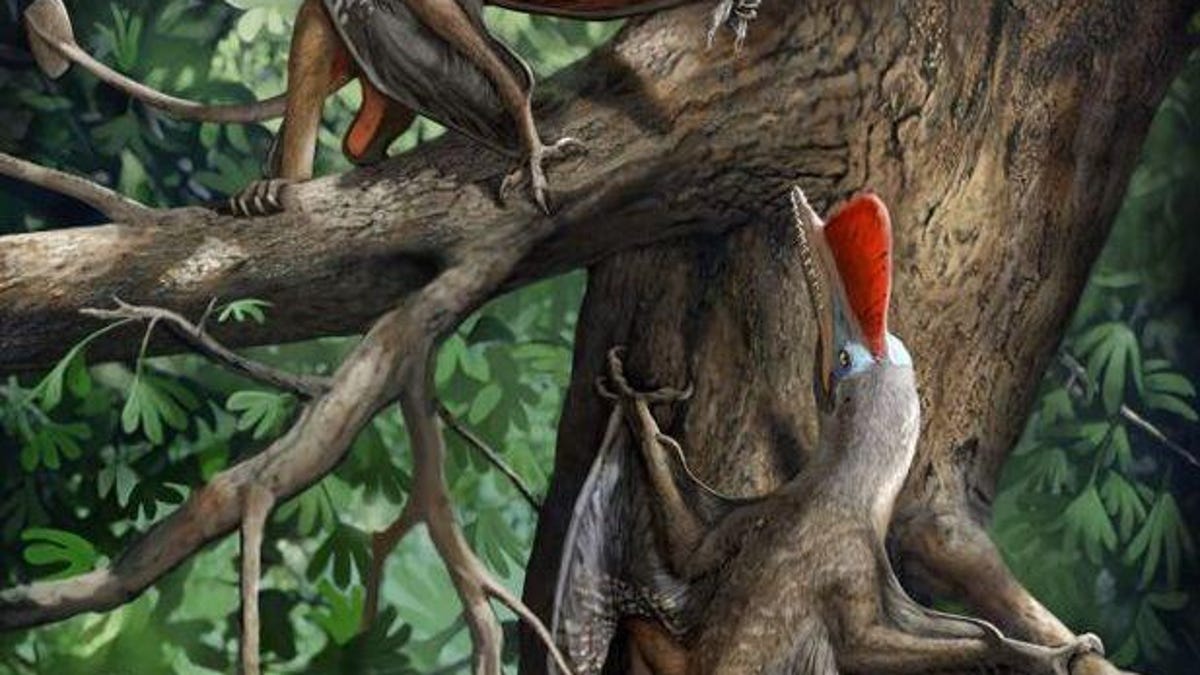Scientists find ancient flying 'Monkeydactyl' with oldest opposed thumb
A 160-million-year-old fossil of a reptile wants to hitch a ride into the history books.

The Jurassic pterosaur Kunpengopterus antipollicatus had opposed thumbs and likely led a tree-dwelling existence.
Humans tend to think of our thumbs as a sign of sophistication. We need to make space for a newly discovered species of flying reptile that scientists say sports the oldest true opposed thumb (which we commonly call an "opposable thumb") ever found. The researchers nicknamed it "Monkeydactyl."
The pterosaur species Kunpengopterus antipollicatus lived during the Jurassic era in China. It was fairly small, with a wingspan of about 33 inches (85 centimeters). What makes it stand out from other pterosaurs is what appears to be an opposed thumb as seen in a fossil.
An international team of researchers published a paper on K. antipollicatus in the journal Current Biology on Monday that highlights the thumb (called a "pollex") and the arboreal nature of the pterosaur, which would have lived in a forest environment.
"This is an interesting discovery," said co-author Fion Waisum Ma in a University of Birmingham statement. "It provides the earliest evidence of a true opposed thumb, and it is from a pterosaur, which wasn't known for having an opposed thumb."
The researchers suggest the thumb was an adaptation for living in trees. An illustration of what the animals may have looked like shows the pterosaurs grasping onto a tree.
Today, we're using to seeing an opposed pollex on ourselves and other primates, but it's good to have a reminder we're not the only animals capable of developing clever thumbs.

